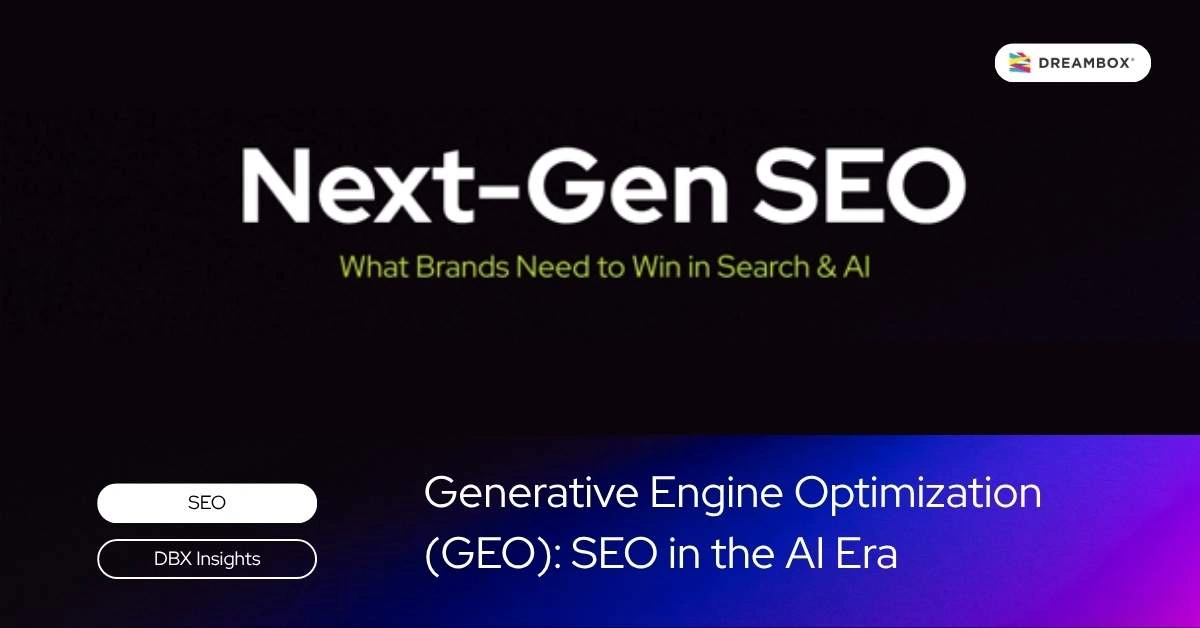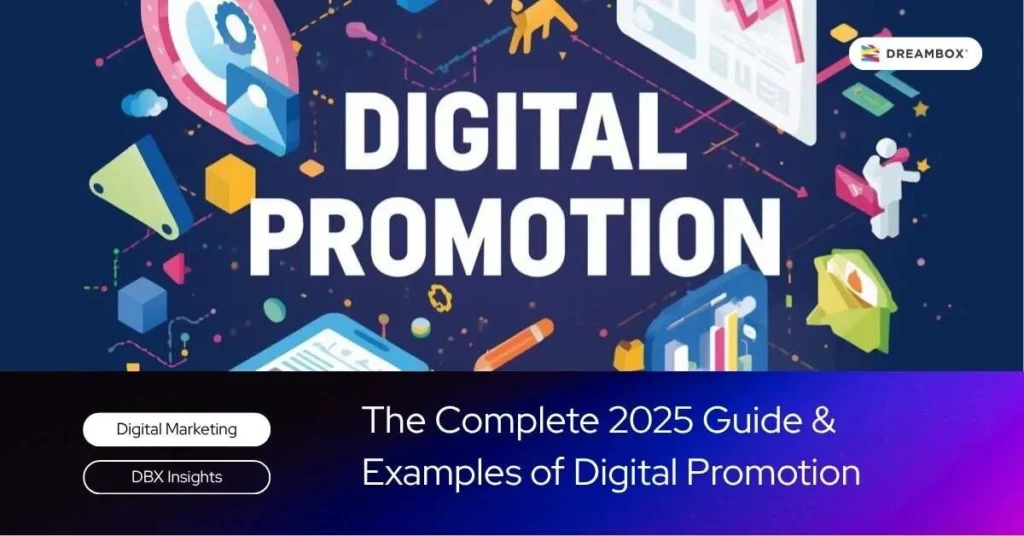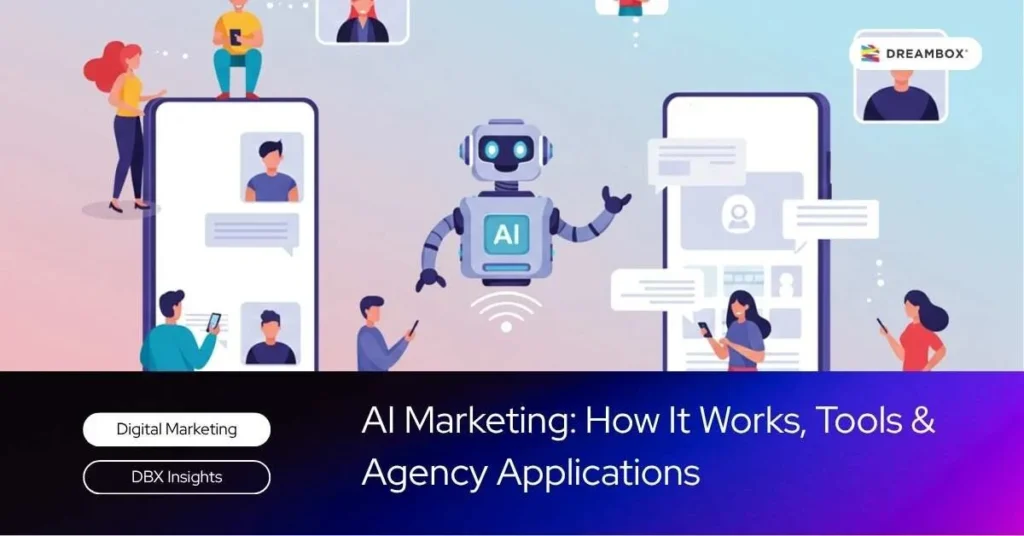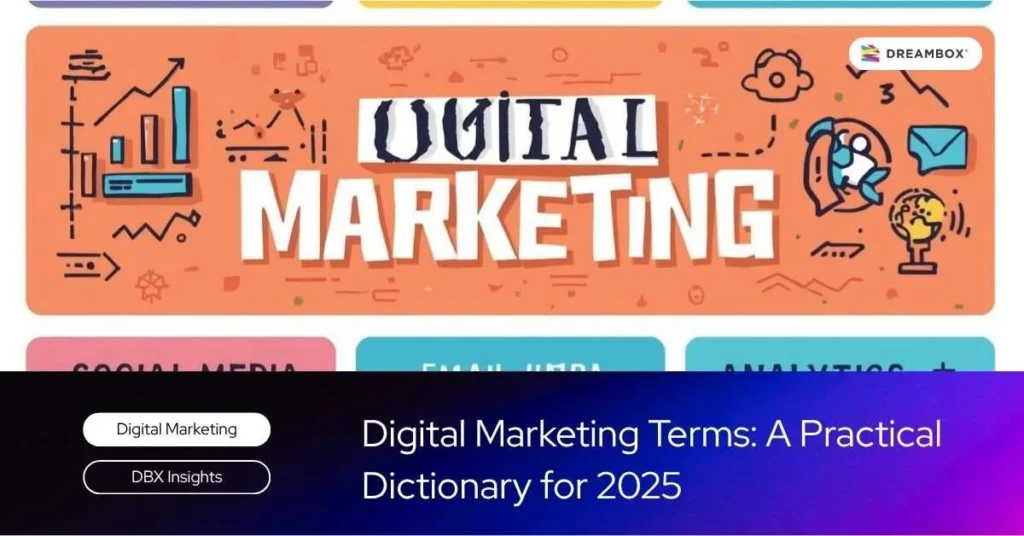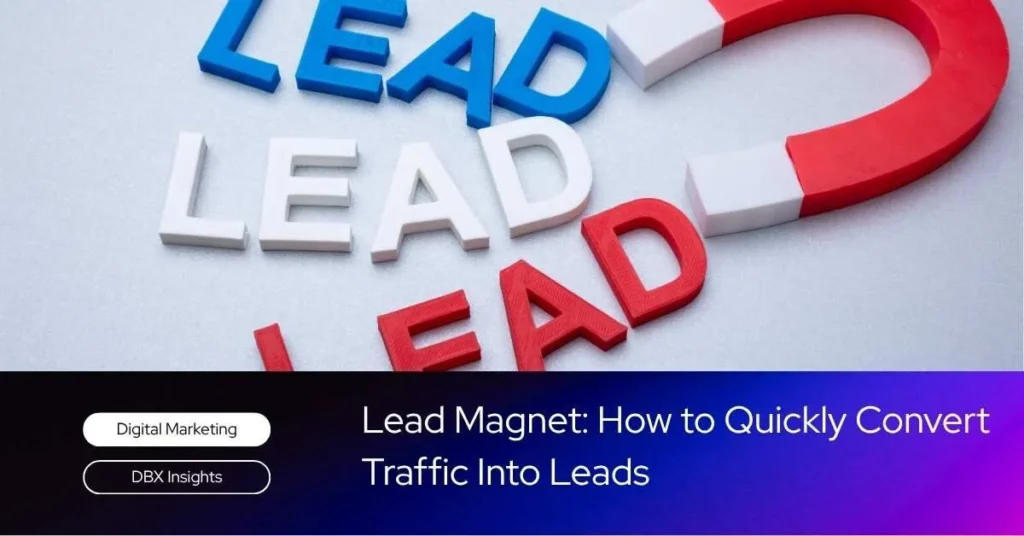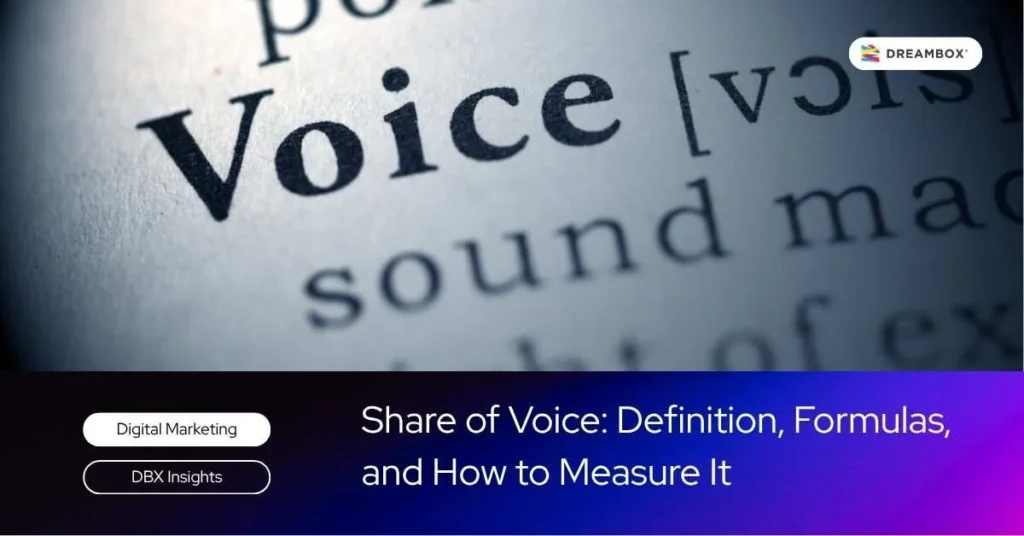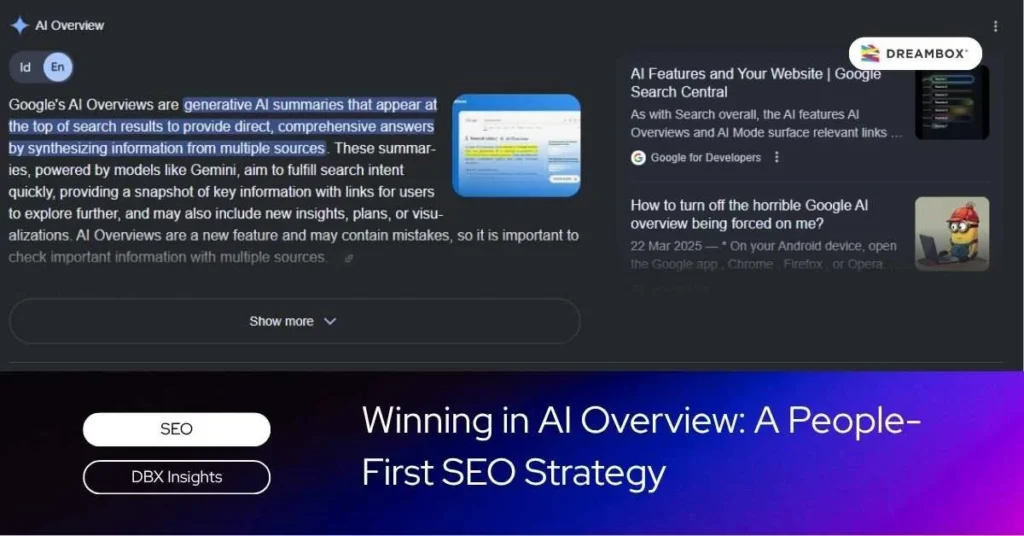Generative Engine Optimization (GEO) has emerged in response to AI’s role as an alternative search engine. This strategy, distinct from SEO, focuses on content optimization specifically for AI. This raises critical questions: how do we leverage it, and is this the end of the SEO era?
What Is Generative Engine Optimization (GEO)?
Generative Engine Optimization (GEO) is a new approach to digital content optimization that makes it more discoverable and understandable by generative AI (such as ChatGPT or Gemini), not just by traditional search engines like Google.
| According to Search Engine Land, the goal of GEO is to ensure your brand or information appears as a credible answer in the responses generated by AI.
In other words, if SEO focuses on ranking on a search results page, GEO focuses on becoming a primary reference source for AI engines and conversational search.
Although our primary focus in this article is GEO, it’s important to understand that GEO is part of a larger optimization ecosystem.
Schedule a free 30-minute branding consultation session with our experts.
The infographic below provides a clear overview of how GEO, along with other disciplines like AIO, AEO, and SXO, will shape the future of SEO in 2025.
GEO vs. SEO: What’s Changing?
Five aspects make GEO quite different from SEO. These five things include:
1. Optimization Goal
SEO is used to optimize content to appear in the top ranks of Google. Meanwhile, GEO focuses not only on that but also on whether the written content can be quoted as a reference by AI.
2. How Content is Displayed
SEO marketing content is displayed in the form of links, but GEO content is displayed directly as a summarized AI answer.
3. Form of User Interaction
SEO interaction is passive, whereas GEO is more interactive, allowing users to ask questions and AI to present answers directly.
4. Criteria for AI-Quoted Content
SEO emphasizes keywords, domain authority, and page speed. GEO places more emphasis on the clarity and accuracy of information.
5. GEO and SEO Integration
GEO and SEO can be combined to help content remain indexed by Google while also being discoverable by AI engines.
Why GEO is Important for Today’s Digital Strategy
Generative engine optimization has become a strategy whose benefits for digital content cannot be ignored. Here are the reasons why GEO is important for today’s digital strategy:
- Changes in User Search Behavior
The way people search for information on the internet has undergone significant changes. Brands that cannot adapt will undoubtedly be left behind.
- Increased Visibility in AI Overviews
GEO can help your content appear in AI Overviews, thereby reaching a much larger audience.
- Building Brand Authority in the AI Era
Brands that use a GEO strategy will be mentioned more frequently by AI and become a reference for a specific niche.
- Potential for Zero-Click Exposure
With GEO, the opportunity to get exposure increases even without clicks or direct website visits.
Generative Engine Optimization (GEO) Strategy
With the right strategy, GEO can help your business stay relevant in the face of the rapid changes of the digital era. Here are effective GEO strategies to implement:
1. Conduct Question-Based & Intent-Driven Research
AI focuses more on questions than keywords. Therefore, research must be based on user questions and intent.
2. Write Relevant and In-Depth Content
Ensure your content is complete, accurate, answers questions, and also provides added value for the reader.
3. Use an AI-Friendly Format (Headings, Lists, Definitions)
Create a content structure that is easier for AI to understand. For example, use structured headings and present information in listicle or table format.
4. Use Schema Markup and Metadata
Use clear markup with standard SEO metadata to help AI engines more easily understand the content’s context.
5. Focus on User Intent and the Need for Answers
Prioritize content that answers user intent, avoid overly technical language, and provide the direct answer at the beginning of the paragraph.
6. Distribute Content for External Validation
Build high-quality backlinks from credible websites to enhance your digital footprint and increase the likelihood of being cited by AI.
7. Build Brand and Source Credibility
Establish author profiles and credentials in each article. Also, use references from trusted sources.
8. Evaluate AI Appearances & Iterate Regularly
Evaluate your content’s appearance in AI responses by using simulated prompts for regular content iteration.
Content Formats Favored by AI (FAQs, How-To, Clusters)
Using a generative engine optimization strategy also means knowing which content formats are favored by AI. Here are some examples:
- FAQs – Direct Question & Answer Format
The characteristic of the FAQ format is that it directly answers a question in a short paragraph, making it easy to quote.
- How-To – Step-by-Step Guides
The how-to format explains a process in detail, making it easier to understand.
- Topic Clusters – A Topical Structure for Authority
The cluster format uses a pillar and cluster (derivative) structure, where topics are still interconnected. This format makes it easier for AI to understand the connection between one idea and another.
Will GEO Replace SEO?
No, GEO is not here to replace SEO—it’s here to evolve it.
Think of SEO as the essential foundation that makes your content visible and authoritative to all search systems. GEO then builds upon that foundation, optimizing your message to be selected and championed by AI as a credible answer. In the modern digital landscape, you don’t choose one over the other; you need both to win.
A practitioner in the field perfectly captures this shift in thinking:
Naomi Tehillah – SEO Manager at Dreambox Agency: “On a technical level, my job hasn’t changed, but its scope has expanded. We used to focus only on, ‘How do we get this page to rank?’. Now, we also must ask, ‘Which sentence here is most likely to be quoted by an AI?’. It pushes us to create much more direct and structured content.”
It’s Time to Adapt Your SEO Strategy for the AI Era
Generative engine optimization (GEO) is a content optimization practice that has emerged in response to the development of generative AI. The presence of GEO will not erase the importance of SEO; in fact, the two can be combined.
The right integration will help your content appear on the first page of Google while also being quoted by AI. Need help optimizing both of these strategies? Dreambox’s SEO Services could be the most ideal solution.
Consult with our team to optimize your strategy or visit DBX Insight to get recommendations for powerful content strategies!

